Hello and welcome to the 3rd in my series of how to get the year off to a great start!
So far, I’ve talked about Guiding Words and creating a 25 for 25 mini goals list and this will have helped to prepare you for the main event – creating you own personal and meaningful Vision Board for the year.
So what are Vision Boards exactly?
Vision Boards harness the power of visualization, goal setting, and positive reinforcement to help people focus on their aspirations and take actionable steps towards achieving them.
They are one of the main tools I use in my coaching and mentoring business, and for good reason, time and time again I have seen them work for people, but first let me tell you what Vision Boards are not.
They are not:
· Pretty mood boards
· A collection of images that you think you should want or need in your life right now
· Something you do as a one off and then shove in a cupboard never to be looked at again
. A collection of images that look nice but that you don’t deeply connect with
· Something to be feared or rushed or thought of as yet another thing to do.
Instead they are:
· Fascinating tools that can help clarify goals
· A visual representation of what you genuinely want in life
· A visual reminder of who you want to be and how you want to live your life
· A chance to manifest and support your dreams coming true
· A process to help encourage action, boost confidence and keep you accountable
· Fantastic motivation when life gets challenging.
They are also a great way to reconnect with your inner self in the winter, when it’s cold and dark, to set you up for the year to come.
Smiley, happy vision-boarders at a recent workshop we delivered
It’s hard to explain the power of creating a vision board without actually experiencing it, but this is not just a flaky trend, there is real science-backed evidence behind how these work.
My favourite Author and speaker on Vision Boards is Dr Tara Swart.
Dr. Swart is a neuroscientist, medical doctor, executive advisor, and author.
She is also a Senior Lecturer at MIT Sloan and has been recognized for her work in neuroscience and leadership. Dr. Swart is passionate about helping individuals achieve mental resilience and peak brain performance.
She is the author of the best-selling book "The Source" which explores the science behind the Law of Attraction and offers practical advice on how to improve one's life through neuroscience.
Here she explains how Vision Boards work:
"Looking at images on a vision board primes the brain to grasp opportunities that may otherwise go unnoticed. That’s because the brain has a process called ‘value-tagging,’ which imprints important things onto your subconscious and filters out unnecessary information."
So for example think about when you may be going on a night out and you fancy a new outfit to wear. You remember seeing a green dress in a magazine and would like to find a similar one, in a similar shade. When out shopping because your brain is now primed for this image, it will filter out all the other items in the shop, and be tuned into only seeking the colour green on the rails.
Also known as the reticular activating system (RAS), it’s a design attribute in our brains that enables us to keep sharp and focussed when we need / choose to.
She explains that the brain assigns a higher ‘value’ to images than written words on a ‘to-do’ list, and the more you look at those images, the more those images move up in importance.
Doing this consistently means that we are literally opening up our brains to the opportunities and possibilities we hope for.
However it does take some time and patience to create new or build upon existing neural pathways to strengthen these connections physically in the brain, so things may not start happening overnight, although I have seen things happen quite fast sometimes!
If you would like to learn more about the neuroscience behind all this, I highly recommend listening to Dr Tara’s recent interview on the podcast – Fee Better Live More, by Dr Rangan Chatterjee here.
So how do we go about creating your ideal personal Vision Board?
Firstly, if you had did have a go at the 25 for 25 , have that close to hand and have a look through it before your start to just remind yourself of what you’d really like to happen / feel / achieve this year.
Then follow these tips:
What you need
· A piece of mountboard, canvas or even a plain piece of cardboard. I choose mountboard because it is sturdy and you can get a selection of colours, but if you are wanting to hang it on a wall, a canvas frame may be better.
· Scissors and glue
· A pile of magazines
· Pinterest images (if you are searching for something really specific)
· A photo – some people like to put a particular photo on their board that evokes a feeling that they want to replicate.
· Pens or paints (if you want to add any personal touches or words)
· Stickers / Washi tape if you’d like to section things off
· A coffee / drink of choice, snacks, and several lovely peaceful, uninterrupted hours!
· Or you could get the family / partner involved or a group of friends and have a really fun creative day making your boards.
Next steps - Take your time
· It can take me a full week to create my board, and I recommend at least an afternoon for this activity.
· Have a good pile of magazines ready – ideally ones that you connect with in terms of lifestyle or areas / hobbies in which you are interested.
· Go through the magazines to collect your meaningful images, and any words, quotes and even numbers that resonate – I know people who put the exact amount that they want to earn in a year on their board and it has come true!
· Sometimes you may be pulled towards certain images but not know exactly why, tear these out too and come back to them later.
· Metaphorical images are also great – an image can mean something on a deeper level, for you only, so for example the bowls in the middle of the board below were selected to represent ‘balance’ for me.
· Once you’ve got a good collection of images, start placing them on your board. Play around with where you are putting them and think about what works for your brain, i.e. some people may be really organised and have sections for different categories, others may be a real mixture with things overlapping, it’s all about what works best for you, there are no rules in vision boarding! But don’t stick your cuttings down just yet.
· Think about the amount of space you want on your board in-between your cuttings, this can signify actual space you want to create in your life too.
· If you have a Guiding Word, add that to your board, and if you can’t find it in a magazine, either write / draw it in or create one with individual letters, like I did below.
· If you can’t find something that you really want on there, leave a space to search for it later on Pinterest.
· When you think you are done, take a picture of the board – sometimes you see where gaps are or if it feels a little unbalanced better through a photo.
Bowls representing ‘balance’ for me
Creating the word ‘ Diligence’ from individual letters
Now finally the most important part is to then stick it all down, which mean you are committing to your vision and dreams!
By doing that you are believing in yourself - that this is all possible for you - and that is the most important thing when creating your vision board.
Now keep it visible
These are Vision Boards and by definition need to be Visible in order to work. Place your board somewhere you will see it all the time, ideally daily. Mine is now in my new office upstairs so I can leave it out all the time without any moaning from the husband!
It could be your office door, the bathroom, or the kitchen.
Or you can take a picture of it to use on your phone or laptop as a screensaver
It’s especially good to check in with your board before your sleep, when you brain is downloading and filing what it has experienced that day.
So how long do Vision Board’s last?
As long as they feel relevant to you. So that means:
· If all your things have come true say 9 months in, you may want to change or update it.
· If life circumstances or priorities change, then you may want to change it to represent more of what you want to focus on now.
Personally, I usually create one in the New Year, and this year I’ve gone for a bigger board, to create more space on the board (and in my life hopefully, although there’s still a lot on there!) , and make it even more visible to me.
The main topics on my board are as follows:
· Tidy house tidy mind and getting organised (Comfort is one of my guiding words)
· Connection, community, and purpose in my work
· Creativity & sharing my voice more(Expression is one of my guiding words)
· Adventure, fun & travel, which also links to family (Bliss is my 3rd Guiding word)
· Nutrition & healthy habits
· Feeling financially fit (in my business)
It’s having an impact already as I headed back to art club on Tuesday night and had so much fun dry point printing!
So this is how I want my year to play out, and creating my board on a snowy week in January, cosied up in my home whilst the thick ice melted, felt like such a positive and hopeful thing to do.
I thoroughly enjoy the creative process, the messy dining table, shreds of paper and piles of magazines everywhere! My husband not so much!
But I always think it is worth giving yourself the time and space to do this properly, this is not a tick box exercise or something to be rushed!
So why not have a go at creating yours, and when you have, I’d love to see them, get in touch here, or in the comments or DM me a picture @thecuriouscreativeclub on Instagram.
My final advice – be careful what you wish for on these boards because it will likely come true!
Keep believing and checking in with your vision, you have the power to make this work.
With love and light
Juliet x

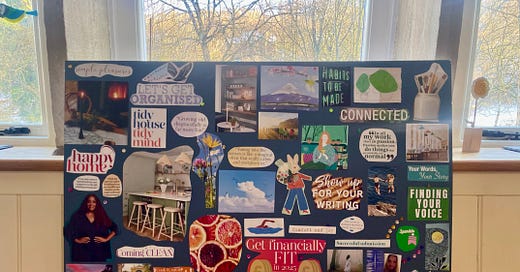


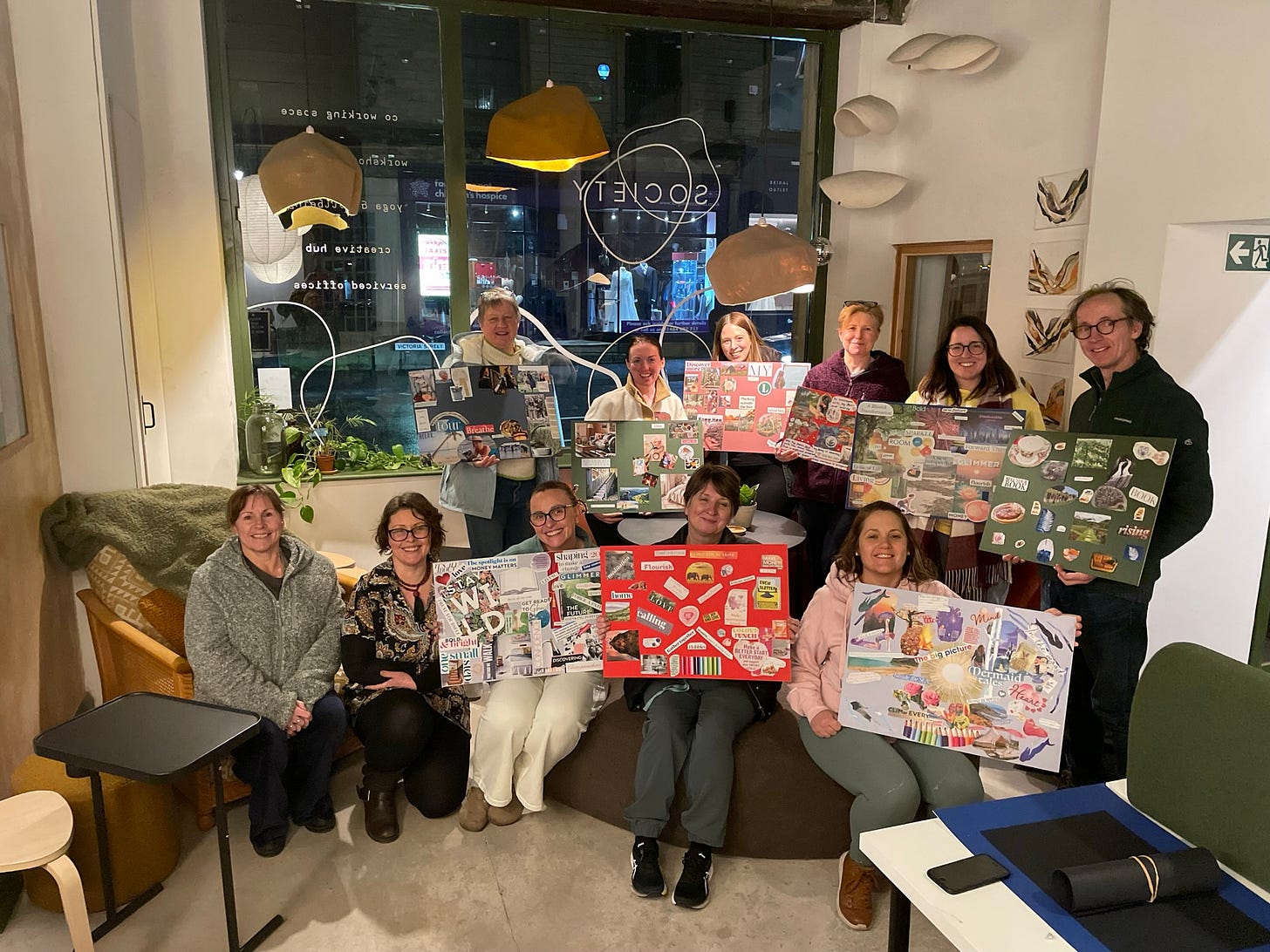
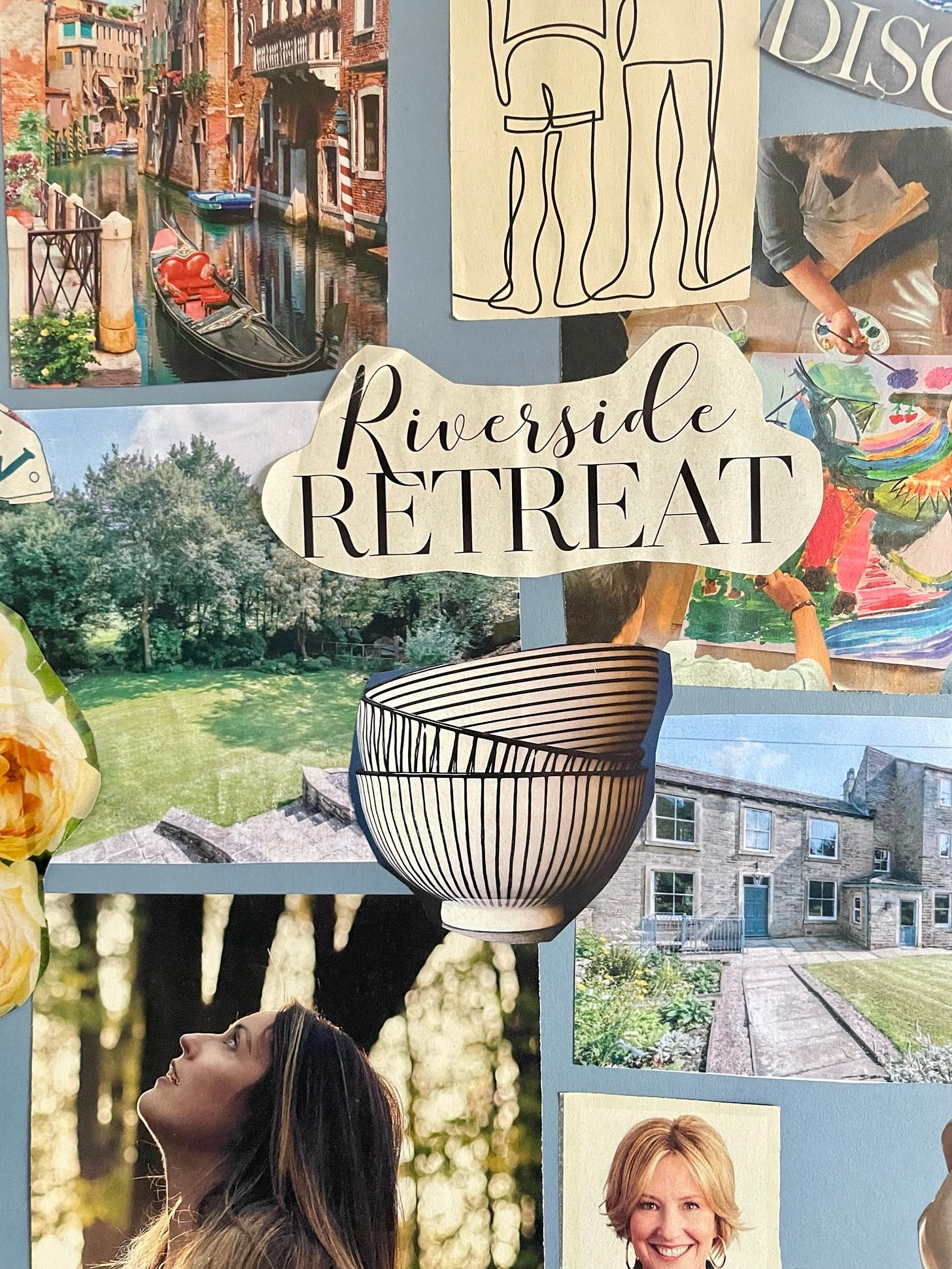
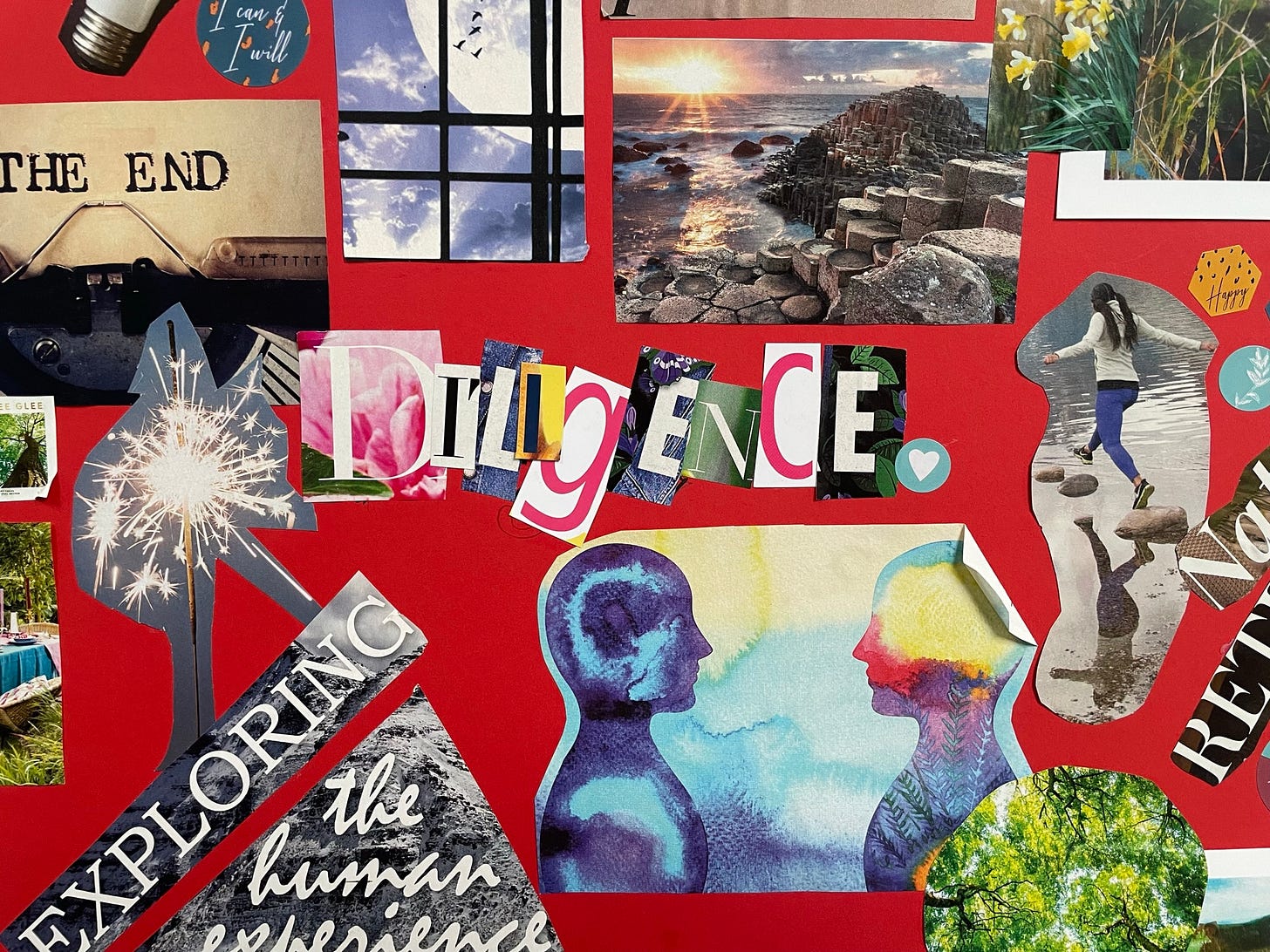
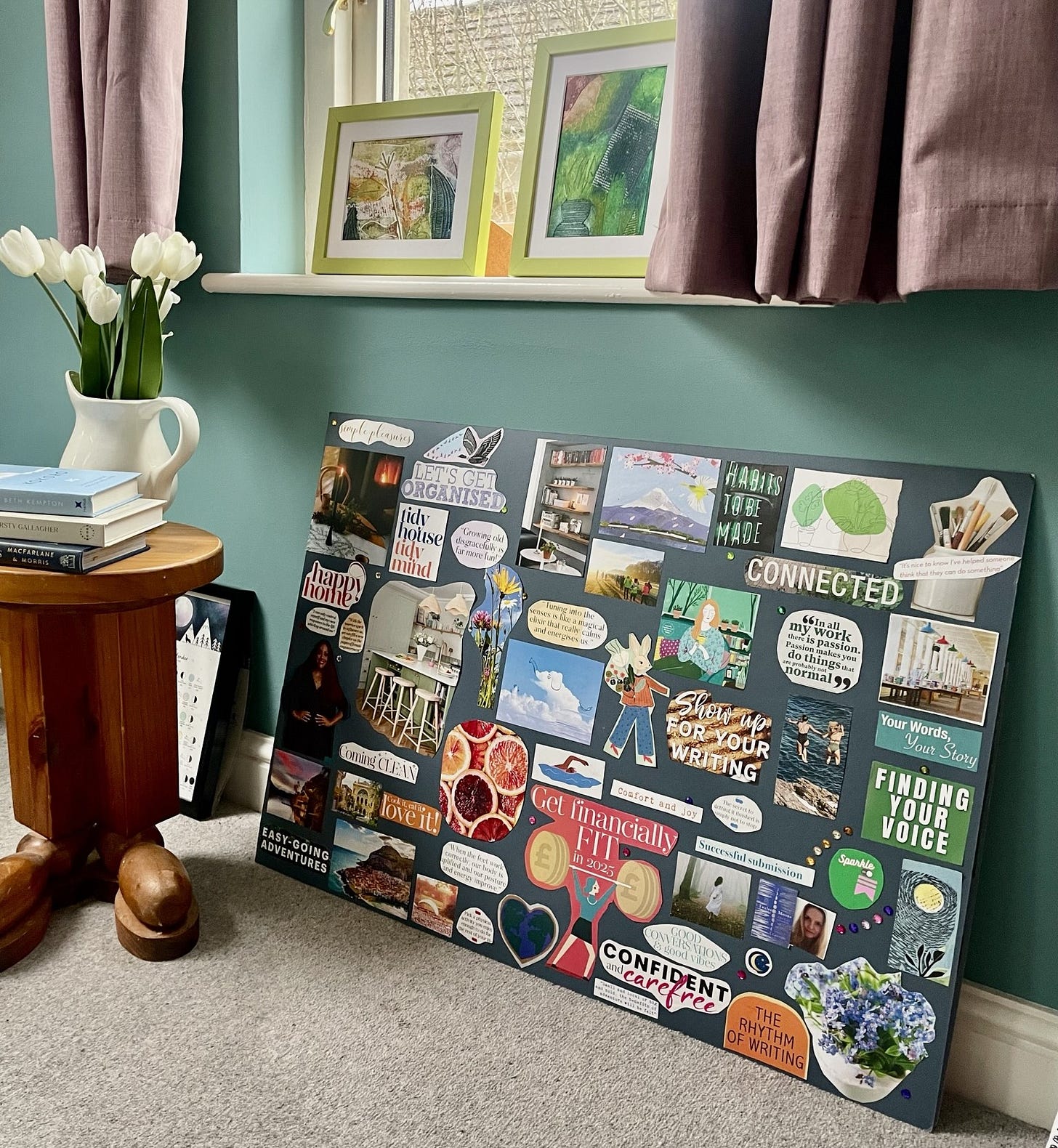
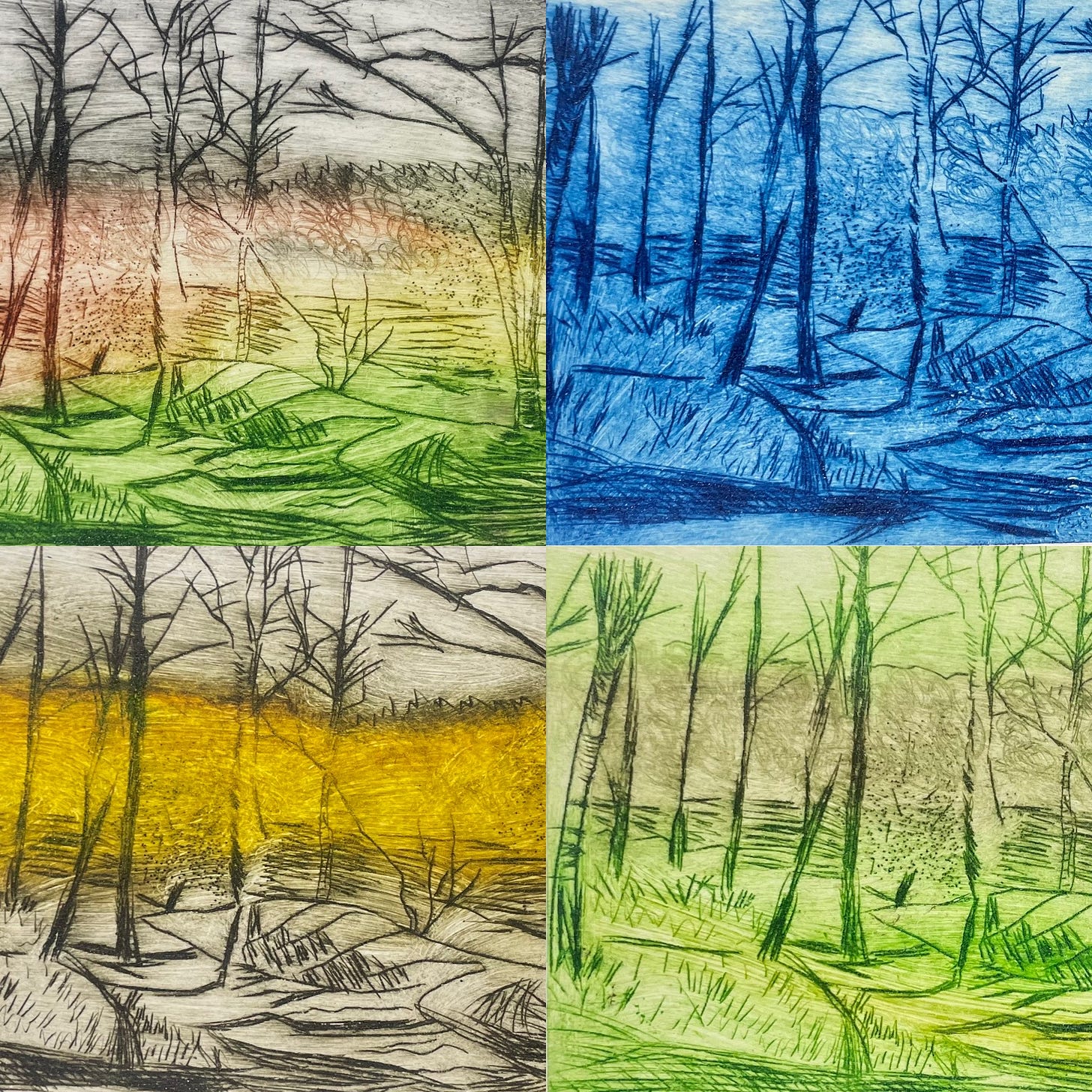
I absolutely love vision boards. It was the first thing I did when I got made redundant, and it's really helping me to stay on track with my loose plans. It was unexpected, too. It seems I have a desire to write a creative book, which I hadn't seen before I made the time to go through the process. Great post :)